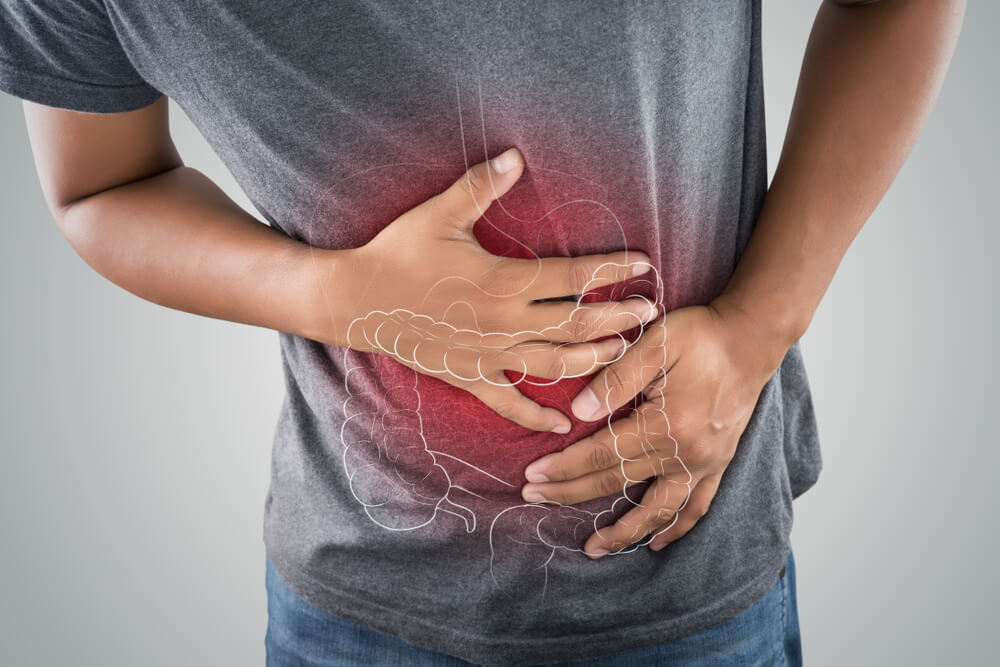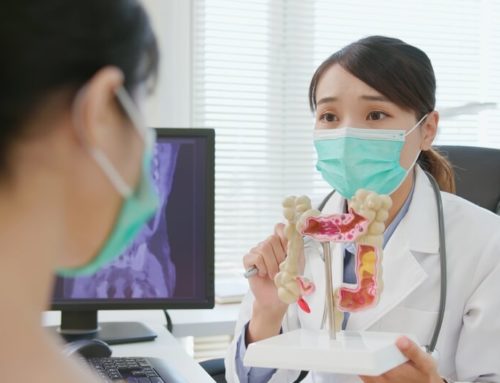Colon polyps are tissue growths from the intestinal wall that protrude into the intestine and are usually benign (non-cancerous). Polyps are very common. They usually do not cause symptoms, so it is important to have regular check-ups, especially if you are over 50. Colon polyps in children are rare. Some polyps can be or become cancerous, so doctors usually remove them. Dr. Eldredge performs colon surgery in Wellington, FL, and will choose the best approach for your colon disease.
Types of Colon Polyps
There are numerous different shapes and types of colon polyps. They can be found throughout the large intestine and colorectal area. They vary in size – from a few millimeters to a few centimeters. Doctors divide them into several types:
- adenomatous (almost all polyps of this origin are cancerous)
- hyperplastic (they rarely become malignant and are smaller in size)
- inflammatory (usually occur as a side effect of IBD disease – ulcerative colitis and Crohn’s disease)
Causes and Symptoms

As previously stated, the majority of colon polyps do not generate any symptoms; however, what can often be an indicator is the appearance of rectal bleeding. A large polyp can cause cramping, abdominal pain, or intestinal narrowing.
A small number of polyps will have some of the following symptoms:
- Bright red colored blood in your stool,
- A rather (dark) black stool,
- General weakness,
- Possible anemia due to lack of iron in the blood,
- Bloating and gas,
- Diarrhea or constipation.
How are Colorectal Polyps Found?
There are several ways to diagnose polyps in the colon and/or rectum. The following medical methods can diagnose them:
- Colonoscopy
Colonoscopy is a process in which a tube with a camera is inserted into the rectum and slowly moved toward the large intestine. This method is the so-called “gold standard” in detecting polyps. A colonoscopy can show every, even the slightest, change in the colon’s lining. Before the procedure, preparation is required, which can include a liquid diet several days before. The patient is given sedatives to calm down and reduce pain.
- Virtual Colonoscopy
Virtual colonoscopy is a technique that uses a CT scan to create an image of the colon similar to that obtained by direct observation during a regular colonoscopy. The difference compared to a colonoscopy is that a virtual colonoscopy inserts a tube into the anus and fills the colon with air. Therefore it does not enter the colon. This method usually does not require sedation.
- Barium Enema Test
The barium enema test is an X-ray test in which a white liquid, called barium or barium slurry, is inserted into the rectum and colon using an infusion tube until it fills them. This method is used to identify normality or abnormality in the definition and appearance of the colon.
- Flexible Sigmoidoscopy
This method is used to examine the anus and the lower part of the large intestine. Flexible sigmoidoscopy is a procedure in which a smaller tube is gently inserted into the anus and colon. Only the lower part of the large intestine is examined. This is a simple yet reliable method of detecting colorectal polyps. Benign growths can be immediately removed without anesthesia and without discomfort for the patient.
The specialist can also feel the polyps in the rectum by palpating the end of the large intestine wearing a glove. However, the above-mentioned methods are much more precise and comprehensive.
Colorectal Polyps vs. Colorectal Cancer
Polyps are considered diseases of the large intestine. Not all polyps in the colorectal area are dangerous or cancerous. However, the larger the polyp, the greater the chance it contains cancer cells.
Colorectal cancer is cancer that forms in the gastrointestinal tract. To simplify, the colon is the first 180 cm of the large intestine, the rectum is the last 15 cm of it, and it ends in the anus. Cancer of the colon and rectum are often grouped as colorectal cancer.
There are different stages of colorectal cancer:
- Localized disease – limited to the primary site
- Regional disease – spreads to lymph nodes
- Advanced disease – cancer has metastasized
- Unknown primary tumor – primary cancer cannot be found
According to these stages, the five-year survival rate of colorectal cancer is determined. The outlook for patients diagnosed with colorectal cancer is based on how advanced the disease is at the time of diagnosis. So that patients who are in the early stage of the localized disease have the highest chances of making a full recovery. In contrast, the prognosis is less promising in patients with an extended illness, i.e., metastasized.
The good news is that colorectal cancer grows relatively slowly. Cancer survival and recovery rates have improved over the past 15 years. There have been some advances in treatment, and procedures have become less invasive.
Surgical Polyp Removal
There are several surgical techniques for removing polyps. The technique itself is chosen by the doctor performing the examination, and it depends on the polyp type, size, position, difficulty to remove, and various other parameters.
Polypectomy or polyp removal is usually done during the colonoscopy, so the patient does not have to be prepared again for the procedure. A large percentage of polyps can be removed immediately. Polyps are often removed by cutting or with the use of an electric loop during colonoscopy. A sample of the polyp is then taken and tested to determine the type and whether it is cancerous. Further, histopathological analysis is carried out to assess whether the polyp has been completely or partially removed, whether there are cancer cells, and to plan further control diagnostics.
If there are a large number of polyps, the removal can be done in several ways. In a smaller number of cases, hospitalization and surgical treatment are required, especially if the polyps are large or suspected of malignant alteration. If colonoscopic removal is unsuccessful, laparotomy should be performed.
If you have had your colorectal polyps removed, you need to be examined every 3 to 5 years regularly.
How to Prevent Colon Polyps

There is no doubt that the chances of colon polyps and cancer risks are significantly reduced by a healthy lifestyle, so our specialist advises to:
- Avoid drinking alcohol and smoking
- Eat healthier – reduce eating red meat and eat more veggies and fiber
- Maintain a healthy body weight
- Drink green tea
Unfortunately, absolutely nothing can guarantee that certain people, especially those with an increased risk, will not develop colorectal polyps or cancer. Hence – early detection is the best prevention.
Regular Check-ups Go a Long Way
Colorectal polyps can reoccur after removal. For this reason, follow-ups are necessary and inevitable. It is essential to be sure that the previous polyp has been completely removed and to monitor whether new polyps have appeared. The probability of recurring polyps is much higher than in people who have never had them.
Disclaimer: This blog is for informational purposes only. If symptoms do not resolve or if they return, seek medical attention as soon as possible from your primary care physician or contact Advanced Surgical Physicians.
We at Advanced Surgical Physicians offer you excellent gastroenterologists, other specialists, and a wide array of services in one location.







